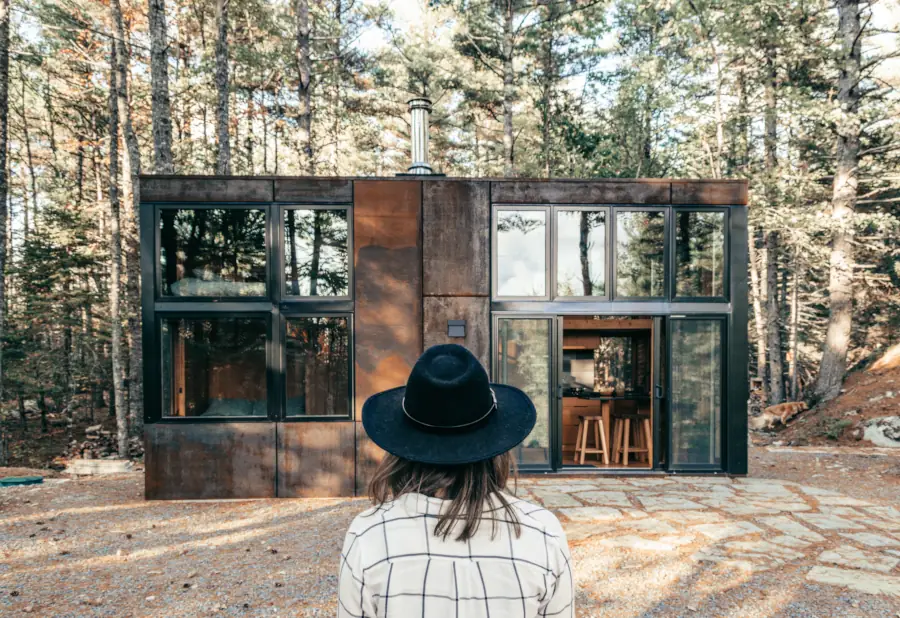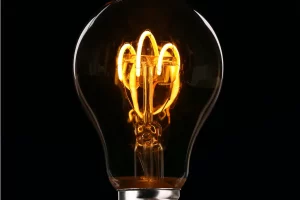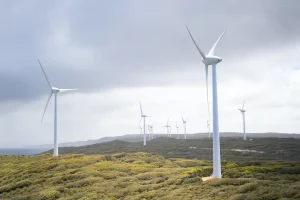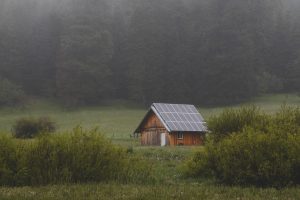In a world where energy consumption is soaring and environmental concerns are mounting, an increasing number of individuals are embracing the concept of off-grid living. Breaking free from the constraints of traditional power grids, off-grid living empowers individuals to generate and store their own electricity using renewable energy sources. Whether you seek a self-sufficient lifestyle, want to reduce your carbon footprint, or simply crave the independence that comes with generating your own power, this article is your comprehensive guide to harnessing renewable energy for off-grid living.
From sun-drenched rooftops adorned with solar panels to whispering wind turbines dotting the countryside, there is an array of options for generating electricity off-grid. We delve into the world of solar power, wind energy, hydroelectric systems, and even biomass to help you identify the most suitable method for your unique circumstances. We explore the ease of installation, cost-effectiveness, scalability, and environmental impact of each option, enabling you to make an informed decision that aligns with your energy requirements and aspirations.
But generating electricity is only half the battle. The ability to store energy efficiently is vital for uninterrupted power supply, particularly during periods of low or no generation. We uncover the intricacies of battery technology, discussing the advantages and limitations of different battery types, including lead-acid and lithium-ion, to help you optimize your energy storage system. Furthermore, we shed light on charge controllers, inverters, and energy management techniques that ensure your stored electricity is ready to power your home whenever you need it.

Understanding the challenges that come with off-grid living is paramount to success. We address the hurdles of upfront costs, limited energy generation, storage capacity limitations, maintenance requirements, system sizing intricacies, and the long-term sustainability of your energy setup.
So, whether you dream of a remote cabin in the mountains, a sustainable homestead in the countryside, or a tiny off-grid dwelling on the outskirts of civilization, get to know the secrets of generating and storing electricity for off-grid living.
How to generate and store electricity off-grid
When it comes to generating and storing electricity for off-grid use, there are several options available. Here are some commonly used methods:
Solar Power
Installing solar panels is a popular choice for off-grid electricity generation. Photovoltaic (PV) panels convert sunlight into electricity, which can be used to power your appliances directly or stored in batteries for later use. Make sure to position the panels to receive maximum sunlight exposure throughout the day.
Wind Power
If you live in a windy area, a small wind turbine can be an effective way to generate electricity. The wind turbine converts the kinetic energy of the wind into electrical power, which can either be used immediately or stored in batteries.
Hydroelectric Power
If you have a water source such as a stream or river on your property, you can harness its energy using a micro-hydro system. This system uses a turbine to convert the flowing water into electricity, which can be used or stored as needed.
Biomass Energy
Biomass, such as wood or agricultural waste, can be burned to produce heat, which in turn can be used to generate electricity through a steam turbine or an organic Rankine cycle (ORC) system. This method requires a constant supply of biomass material.
Generators
A backup generator can be used to produce electricity when other renewable sources are not available or insufficient. Generators can run on various fuels such as gasoline, diesel, propane, or natural gas. They can provide power directly or charge batteries for later use.
To store electricity generated from renewable sources, you’ll need to use batteries. Here are some considerations for battery storage:
- Choose deep-cycle batteries specifically designed for off-grid systems. Lead-acid batteries, such as flooded, sealed, or gel batteries, are commonly used. Lithium-ion batteries are another option, offering higher efficiency and longer lifespan but at a higher cost.
- Determine the battery capacity based on your energy needs and the number of days you want to rely on stored energy in case of low or no generation.
- Implement a charge controller to regulate the charging process and prevent overcharging or deep discharging of the batteries. This device helps optimize battery performance and extends their lifespan.
- Consider an inverter to convert the stored DC (direct current) power into AC (alternating current) power, which is compatible with most household appliances.
It’s important to note that the optimal solution for generating and storing electricity off-grid depends on various factors such as your location, available resources, energy needs, and budget.
Which is the easiest and most affordable way to generate electricity for home usage off-grid
Among the various options for generating electricity off-grid, the easiest and most affordable method for a residential home would likely be solar power. Solar energy is abundant, renewable, and relatively simple to install and maintain.
The cost of solar panels has significantly decreased over the years, making it a more affordable option for residential use. Additionally, various government incentives, tax credits, and subsidies may be available to help reduce the upfront costs further.
Solar panel systems are relatively straightforward to install and require minimal maintenance. Once the panels are in place, they can generate electricity silently and with no moving parts, minimizing the chances of mechanical failures.
Solar energy relies on sunlight, which is generally available in most regions. Even in areas with less intense sunlight, solar panels can still generate a significant amount of electricity. Positioning the panels to maximize sun exposure is important for optimal performance.
Solar power systems can be easily expanded over time. You can start with a small number of panels and gradually add more as your energy needs increase or as your budget allows. This scalability makes it convenient to adapt the system based on your requirements.
Solar panels typically require minimal maintenance. Regular cleaning to remove dirt or debris from the panels and ensuring the connections are secure is usually sufficient. It’s also beneficial to monitor the system’s performance periodically to identify any issues promptly.
Solar power is a clean and quiet energy source, producing no harmful emissions during operation. By relying on the sun’s energy, you contribute to reducing greenhouse gas emissions and lowering your carbon footprint.
However, it’s worth noting that the ease and affordability of installing solar power can vary based on factors such as the size of your energy needs, the availability of sunlight in your location, and any specific regulations or requirements in your area.
What are the biggest challenges of generating and storing electricity off-grid
Generating and storing electricity off-grid presents several challenges that need to be considered. Some of the major challenges include:
- Initial Cost. Setting up an off-grid electricity system can require a significant upfront investment. The cost of purchasing and installing renewable energy systems such as solar panels, wind turbines, or hydroelectric generators, along with the necessary equipment like batteries, inverters, and charge controllers, can be substantial. These costs need to be carefully evaluated and planned for.
- Limited Energy Generation. Off-grid systems rely on renewable energy sources, which can be variable and intermittent. Solar panels generate electricity only during daylight hours, and their output can be affected by weather conditions such as clouds or shading. Wind turbines require consistent wind speeds to produce energy. The availability of water for hydroelectric power may vary seasonally. These limitations mean that energy generation may not always meet the demand, especially during extended periods of low resource availability.
- Storage Capacity. Storing electricity for later use is crucial in off-grid systems, especially when energy generation exceeds immediate consumption or during periods of low generation. However, batteries used for energy storage have limitations in terms of capacity, lifespan, and efficiency. Sizing the battery bank correctly to meet the energy demands and planning for replacement costs in the future can be challenging.
- Maintenance and Monitoring. Off-grid systems require regular maintenance and monitoring to ensure optimal performance. Solar panels need periodic cleaning and inspection for any damage or efficiency losses. Battery banks require proper maintenance, including monitoring the charge levels, checking for corrosion, and ensuring the battery bank remains in good condition. These tasks can be time-consuming and require some technical knowledge.
- System Longevity. Off-grid systems typically rely on components that have a limited lifespan. Solar panels may last 25-30 years, while batteries generally need replacement every 5-10 years. Planning for component replacements and considering the associated costs is crucial for the long-term sustainability of the system.
Despite these challenges, advancements in renewable energy technologies and increasing efficiency of energy storage systems are helping to address many of these issues.
Conclusion
Generating and storing electricity off-grid offers a path to independence and sustainability. By harnessing renewable energy sources like solar, wind, or hydro, you can break free from traditional grids and reduce your carbon footprint. Energy storage systems, such as batteries and inverters, ensure a continuous power supply during periods of low or no generation.
While there are challenges like initial costs and system maintenance, proper planning and adopting energy-efficient practices can overcome them. Remember that every off-grid journey is unique, so consulting experts and staying updated on evolving technologies will help you create a resilient and sustainable power system.



